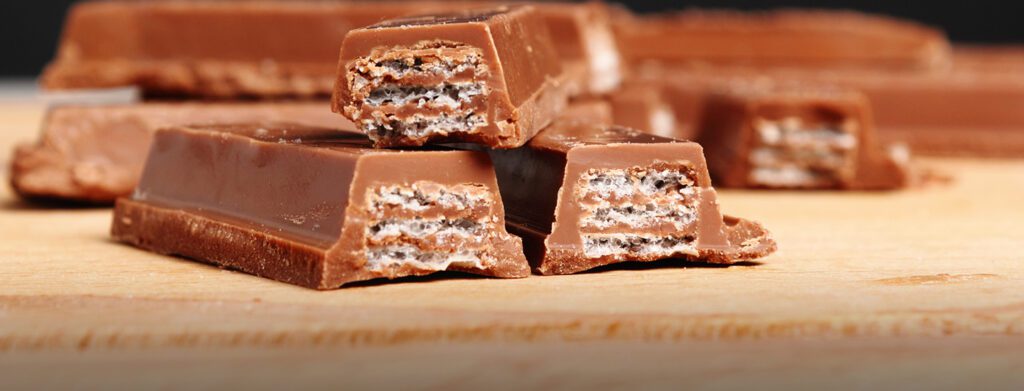Author
The Court of Justice of the European Union (the Court) has recently had its turn in a five year dispute relating to a four-fingered chocolate bar between rivals Nestlé and Cadbury. The Opinion of the Advocate General was previously discussed here.
The Court was asked to provide a view on the following questions by the English High Court.
Should trade mark registration be denied if a shape has three essential features, two of which are necessary to obtain a technical result and therefore not capable of registration and one of which may be capable of registration?
i.e. if the number of fingers and the formulation of the grooves between them were necessary to obtain an easily breakable chocolate bar but the rectangular shape was potentially distinctive in the registration class of ‘confectionery, cakes and pastries’ and therefore capable of registration, should the 3D shape be denied registered trade mark protection?
Court’s decision: The relevant EU Directive (2008/95/EC) (‘the Directive’) prevents the registration on this basis. The three grounds operate independently and registration will be refused where one of these applies fully.
Should the Directive be interpreted as preventing registration of shapes that are necessary to obtain a technical result?
Court’s decision: The Directive only prevents registration in relation to the way in which the final goods function, and does not apply to the way in which goods are manufactured. From the consumer’s perspective, this is not important.
Is the trade mark applicant required to prove that the relevant class of persons associate the mark with the applicant’s goods/services or only a ‘significant proportion’ of the relevant class of persons?
i.e. if the trade mark has distinctive character so as to allow registration, is it sufficient for the applicant to show that a significant proportion of the reasonably well-informed public associate the 3D four-fingered shape with Nestlé?
Court’s decision: To be granted trade mark protection for a 3D shape and demonstrate it has acquired distinctive character, the applicant must prove that the ‘relevant class of persons’ recognises the goods (or services) on the basis of the 3D shape only and without any reference to any other trade marks of the applicant.
This decision raises several interesting points.
The Court’s indication that shapes could be protected even if some individual elements of the shape relate to the technical result (but an Article 3(1)(e) ground of the Directive is not fully established) is encouraging for brands considering registration of 3D shapes. However, for Nestlé it appears that it faces an uphill struggle to show that the shape is not required to produce a technical result and therefore the ground for refusal is not met.
The requirement for the 3D shape alone to be capable of identifying the brand name in the minds of ‘the relevant class of persons’ sets a higher threshold for trade mark applicants to succeed and is particularly difficult for brand owners whose word marks are already well-known. It is still not clear what percentage of relevant consumers would need to identify the Nestlé brand to show it has acquired distinctive character capable of registration.
The Court’s decision on proof of distinctiveness appears to be the particularly relevant for Nestlé, as the 3D shape of its four-fingered bar must be capable of identifying Nestlé as the owner of the goods without any reference to additional trade marks – i.e. the well-known KitKat or ‘Have a Break’ word marks. Whilst Nestlé argues that in the 80 years of trade, the 3D shape only is synonymous with Nestlé’s Kit Kat bar, this may be difficult for brands to prove when looking to trade mark product shapes, in addition to existing well-known word marks.
Both Nestlé and Cadbury have been positive about the Court’s decision. We will keep you updated on the decision of the English High Court.
The judgment of the Court is available here
Print article

